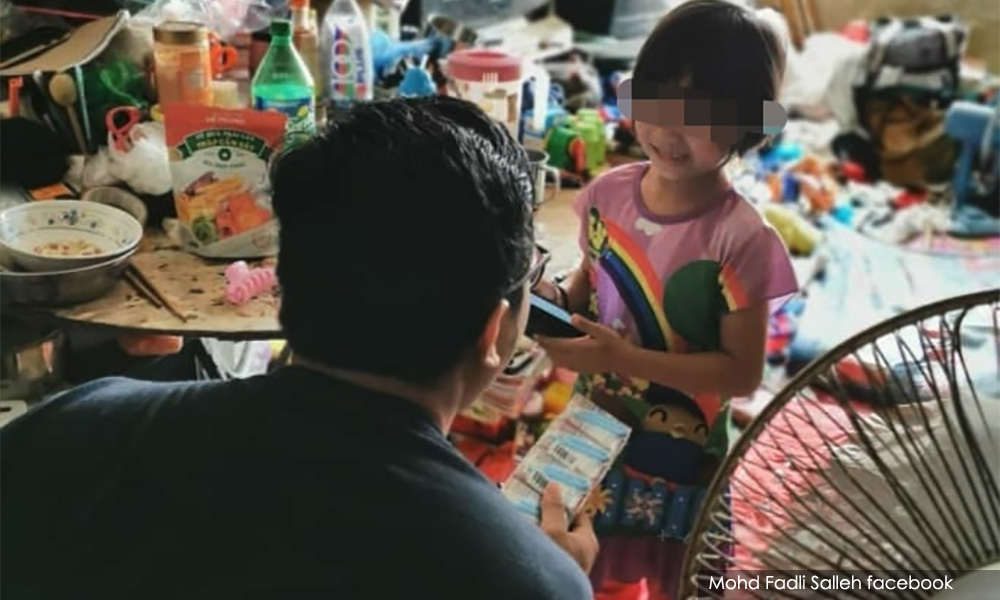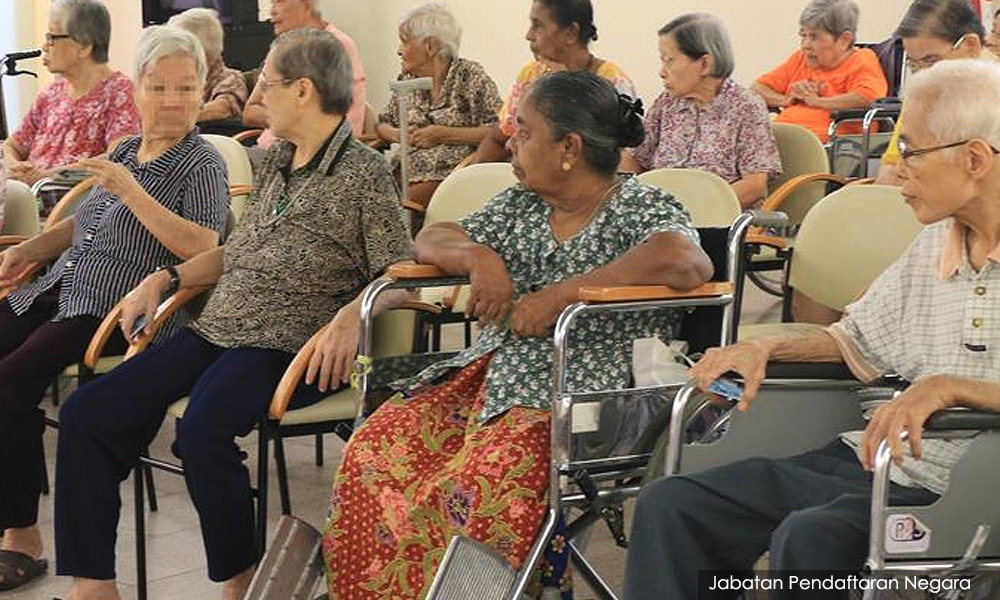The 88 billion ringgit question: Where has it gone?
For the past 16 months since the Perikatan Nasional (PN) government took over, I have been having flashes of nostalgia of my primary school days. This happens particularly when the government talks about science and big data underpinning all their policy prescriptions. Like most of the ordinary public, I could not make sense of it; but using primary school arithmetic and science, I am enlightened but alarmed at the same time.
A case in point. The government and the banks have been spinning in the media with technical jargon on the loan moratorium benefits. The finance minister boasted “no other country has a comprehensive loan moratorium like this”! Feeling betrayed, the public are now educating each other on how simple and compound interest works. Yes, primary school arithmetic.
Similarly, I want to discuss the pandemic stimulus packages valued at RM530 billion announced by the government thus far, which includes direct fiscal injection of RM88 billion. The public only realised the enormity of this value after the 1MDB scandal broke.
Even when 1MDB was bleeding, like the government is now, billions and millions of direct cash injections were made to the personal bank accounts of the ruling class and their cronies.
Understandably, the cash-strapped public was also expecting a windfall. However, most individuals and businesses are complaining they are only getting pittance. Nobody seems to have a complete picture of where the money actually went. So, where is the disconnect? I will try to unravel this mystery using basic arithmetic.
Before that, let me make sense of the confusing technical terms used. The government says the stimulus relief package consists of two components: direct fiscal injection and others variously referred to as stimulus, relief and/or benefit. I will deal with the former here, which I would call “direct cash aid”, because it is essentially the taxpayers’ money that the government hands out. The latter seems to be like the economic multiplier-effect, where a cash injection generates even more cash or benefits. Let me call this the “multiplier economic benefit”.
The latest Pemulih package consists of RM10 billion direct cash aid, and it presumably generates RM140 billion multiplier economic benefit, and return of 14 times. Really? No wonder investment scams are thriving. The public cannot be faulted for believing in these scams, if a financially prudent government can generate such enormous returns. This multiplier economic benefit of RM442 billion will be explored in another opinion piece, as it is an intriguing story by itself.
By the way, this arithmetic lesson is from the public to the “executive class of 70” and the cohort of “opposition have-beens”. Please pay attention.
RM1,000 per month for 22 months? Yes, that’s what each deserving family of five should have received.

Unbelievable? Malaysia’s population in 2020 was 33 million, including three million non-citizens (all figures rounded up). Assuming an average family of five, that will be 6.6 million households. The top 20 percent (T20) and 20 percent of the upper M40 should be able to sustain themselves. That leaves the bottom 60 percent (20 percent lower M40 and B40) or four million households requiring financial support.
With RM88 billion direct cash aid, each household on average should be eligible for RM22,000 in cash. If stretched monthly, each household should receive RM1,000 per month from March 2020 to December 2021 from the stimulus packages so far. This amount is a global average and can be fine-tuned according to the needs of each segment of the population.
It is a simple calculation, but extremely meaningful to start our conversation about where the money should have gone. In any society, the most basic unit and the primary target is an individual, or in this case, the household/family.
Assume that an average household needs RM3,000 per month to sustain themselves in normal times, often called the living wage. That amount can be segmented equally in three components: (1) Survival: basic living expenses like food, cloth, shelter, school, work, etc. Any shortfall and one has to raise the white flag, (2) Sustenance: rent, debt, mortgage, insurance, investment, etc. Any shortfall, one will be sucked into the loan moratorium mess and retirement fund raids, (3) Discretionary: savings, travel, luxury goods and services. In a lock-down this can be forgone. But for the deserving ruling class and cronies, the taxpayers have to pay for their luxury lifestyle and frequent overseas jaunts with family and entourage, because to them it is survival.
In a worst case scenario, like in this prolonged on-off lockdowns, livelihood is systematically destroyed and a family may only earn about RM1,000 a month. However, the direct cash aid of RM1,000 can cater for sustenance. Therefore a 70-80 percent of normal earnings should sustain each household with quality living.
The point is the RM88 billion of taxpayers’ money would have comfortably sustained each and every needy individual/household during these pandemic times. Based on the definition of population, this includes the destitute, homeless, orphans, disabled, aged, and nonagenarians.

A direct cash aid, by definition, would be the most efficient form of intervention. It is indeed ironic that the term “direct fiscal injection” is being made a mockery of by diluting and diverting it through various schemes/subsidies coursing through multiple intermediate players.
Depressingly, politicians from both sides distract the public by basing their conversations on each scheme, programme or form of financial assistance, like the blind guessing the shape of the elephant. The only difference here is that these politicians act like the proverbial three monkeys, on purpose.
Imagine ministers having photo-ops of gift-wrapped food aid, their pictures prominently displayed, and a crowd of hungry people assembled in this pandemic times. Wouldn’t a simple e-commerce food voucher have delivered that food for free, right at their doorstep, with 100 percent of its value going to the foodstuff? This and more will be explored in my next article.
Show us the money
The question therefore arises: did each household receive such an amount of cash, on average? If not, where did the money go? My imagination went wild, and of course it wouldn’t be publishable without evidence. Just then, the prime minister solved my dilemma. Appearing innocuously in the text of the speech by the PM in announcing Pemulih is the following paragraph:
“Kerana itu, sejak pandemik COVID-19 melanda negara kita, Kerajaan telah melaksanakan tujuh program bantuan dan pakej rangsangan dengan nilai keseluruhan berjumlah 380 bilion ringgit. Setakat ini, sebanyak lebih 200 billion ringgit telah disalurkan dan memberi manfaat kepada lebih 20 juta rakyat serta 2.4 juta perniagaan. Belanjawan 2021 pula bernilai 322.5 bilion ringgit dan masih berbaki 100 bilion ringgit untuk dibelanjakan sehingga hujung tahun ini.”
The 20 million population perfectly fits my four million households. Before Pemulih, the direct cash aid was RM77 billion ringgit. From March 2020 to June 2021, a monthly direct cash injection would have cost RM64 billion. This amount should be in the RM200 billion stimulus expended so far.
To be honest, I only discovered this paragraph at the last moment. It changed my conclusion to this article. The prime minister literally agrees to my long-winded arithmetic and confirms that such cash aid was indeed channelled (disalurkan) to the deserving public.
Please show us the cash. The burden falls on the executive class of 70, each of whom must have had a slice of the direct fiscal injection Malaysian pie. Our flamboyant finance minister cum renowned banker bears full responsibility to substantiate his prime minister’s statement, more so as the chief of Pemulih. Oh, and please explain it in layman’s terms and in simple arithmetic.
I can foresee the intellectuals will brush us aside as being uninformed and uneducated. Among my qualifications, I am a chartered accountant (MIA, 6276) and a chartered management accountant (CIMA UK, 434399). But I don’t need to use this knowledge unless, of course, I want to spin. - Mkini
RAMAN LETCHUMANAN was director, Environment/Conservation, Ministry of Science, Technology and the Environment (1993-2000), head of Environment/ Haze/Disaster Management, Asean Secretariat, Jakarta (2000-2014), and senior fellow at S Rajaratnam School of International Studies (RSIS), Nanyang Technological University, Singapore (2014-2016). E-mail: raman.asean @gmail.com.
The views expressed here are those of the author/contributor and do not necessarily represent the views of MMKtT.
✍ Credit given to the original owner of this post : ☕ Malaysians Must Know the TRUTH
🌐 Hit This Link To Find Out More On Their Articles...🏄🏻♀️ Enjoy Surfing!




















Post a Comment